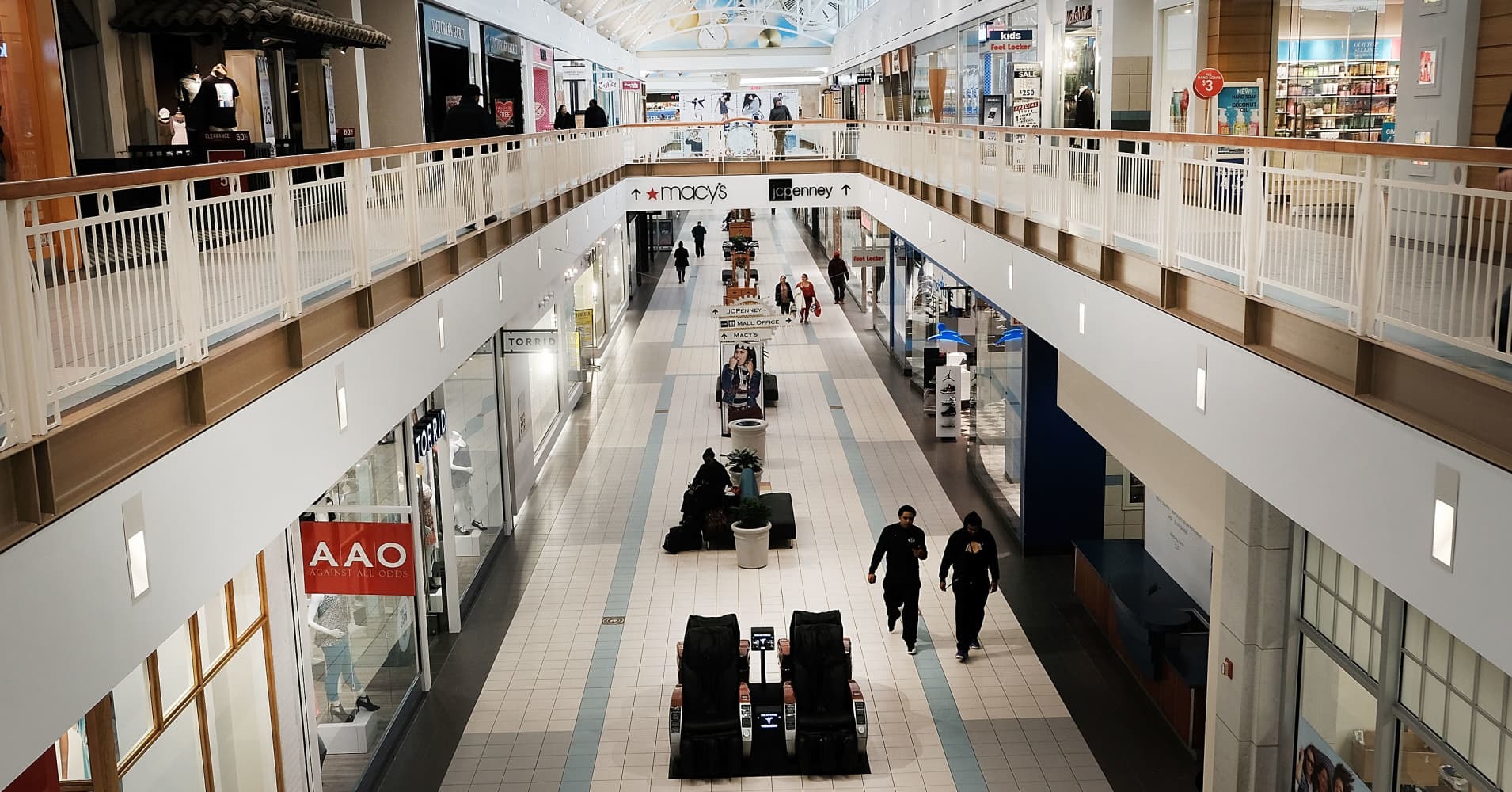
U.S. mall owners are fighting back after a bumpy start to the year — with more than 90 million square feet of retail space already slated to go back on the market in 2018, according to data from CoStar Group. And it’s still clear some landlords face a steeper uphill battle than others.
“2018 will be a difficult year for CBL,” CBL Properties CEO Stephen Lebovitz said on a conference call with analysts and investors last week. He said CBL’s first-quarter financial results were hit hardest by a wave of bankruptcies and store closures to round out last year, which also flowed into the start of 2018. That’s included Toys R Us, Gymboree, Claire’s, The Walking Company and Bon-Ton, to name a few.
As real estate investment trusts report their first-quarter financial results, it’s offering a glimpse at the progress, or lack thereof, being made in the industry. Analysts continue to point to a bifurcation between those malls that will survive, and those that lack a clear reason to exist.
CBL doesn’t own the top-tier properties like its peers Simon Property Group, GGP and Macerich, but instead its roughly 120 properties, 63 of which are malls, are situated in more suburban markets like Spartanburg, South Carolina, and Wilmington, North Carolina.
The REIT notably had 16 Bon-Ton stores in its portfolio prior to the department store chain filing for bankruptcy protection and pursuing liquidation, and Lebovitz said redevelopments of those spaces will cost as much as $90 million over the next three to four years.
“Despite these challenges, we are encouraged by signs of a recovery in the general retail landscape,” Lebovitz said, referring to the fact that retail sales accelerated the most since the Great Recession during the 2017 holidays.
In the latest quarter, CBL’s occupancy rate dropped slightly to 91.1 percent from 92.1 percent a year ago. However, the company hinted at a few major projects in the works, including converting a dark J.C. Penney store into an H&M, Outback restaurant and Planet Fitness, and taking a vacated Macy’s box and replacing it with a Round 1 arcade. Those redevelopments, once completed, will help curtail vacancies.
The REIT said roughly 70 percent of its new leases executed during the first quarter were for non-apparel tenants, including Dave & Busters, a steakhouse and other entertainment and dining venues. The new additions speak to a wider shift happening within the industry.
Still, CBL’s portfolio remains the least productive in the mall space, with tenant sales on average of $376 per square foot. Next in line is Washington Prime Group, which said sales at its tier-one assets were $401 per square foot during the first quarter, while sales at tier-two centers were $286 per square foot.
“Since 2014, we have had approximately 2.3 million square feet, or nearly 10 percent of inline space, succumb to the black-cloaked, scythe-wielding grim reaper of bankruptcy,” WPG CEO Lou Conforti told analysts and investors last week.
WPG, like CBL, owns malls largely in second- or third-tier markets. The REIT made headlines last month when it joined a group of investors to make a bid for Bon-Ton’s assets that eventually fell through. WPG also had 16 Bon-Ton stores in its portfolio.
Conforti told CNBC the deal for the retailer would’ve been a “capital structure investment” from his standpoint. The REIT would’ve “bought time” and had preference over other landlords for Bon-Ton’s real estate, he said.
Now, Conforti said WPG is pursuing “wholesale solutions” for those spaces. That would entail dividing the boxes up and bringing in more than one retailer per location.
WPG’s occupancy also dipped slightly during the first quarter, to 92.8 percent from 93.3 percent a year ago. But the REIT, like CBL, is optimistic about developments in the pipeline. Most recently, WPG bought back four boxes from Sears Holdings, with plans to repurpose those spaces.
Taubman Centers and Simon tell a slightly different story in the retail real estate industry.
“There’s a clear bifurcation between the top-tier and middle quality operators,” Edward Jones analyst Matt Kopsky told CNBC. “Elevated bankruptcies will continue, but there’s a higher demand for quality centers.”
Taubman’s 26 properties in the U.S. and Asia, which tend to house luxury brands like Tiffany, Louis Vuitton and Gucci, boast sales of $837 per square foot, the most in the industry. Second is Simon, with sales of $641 per square foot.
“We feel better about the business than in ’17,” Simon CEO David Simon said. The conversation on Simon’s latest earnings conference call touched on new residential uses coming to its properties, like a Nobu Hotel at Atlanta’s Phipps Plaza, adding more food options, and harvesting data on consumers to help drive traffic and sales.
Simon also suggested retailers at its properties were increasingly investing in their stores, or moving to smaller locations altogether in order to help drive productivity and profits. The REIT raised its full-year outlook, building on the momentum in the first quarter.
“Now more than ever, as retailers rationalize store counts [and] retail square footage, and malls consolidate, and seasoned and new retailers are more selective with real estate, it’s evident that dominant properties like ours will outperform, gain market share and become even more valuable,” Taubman CEO Bobby Taubman told analysts and investors.
On the heels of a handful of retail REITs’ earnings last week, the industry rallied on what were viewed as either in-line or better-than-expected results. Shares of CBL, WPG, Simon and Taubman are all up from a week ago. The stocks were all still climbing Tuesday afternoon.
“I think overall the results were pretty decent,” Mizuho Securities analyst Handel St. Juste told CNBC. “The divergence isn’t too surprising.” Store closures are hitting the lower-tier operators more than they are Simon and Taubman, he said.
Later this week, PREIT, Macerich, GGP and Seritage will report their earnings results.
Be the first to comment